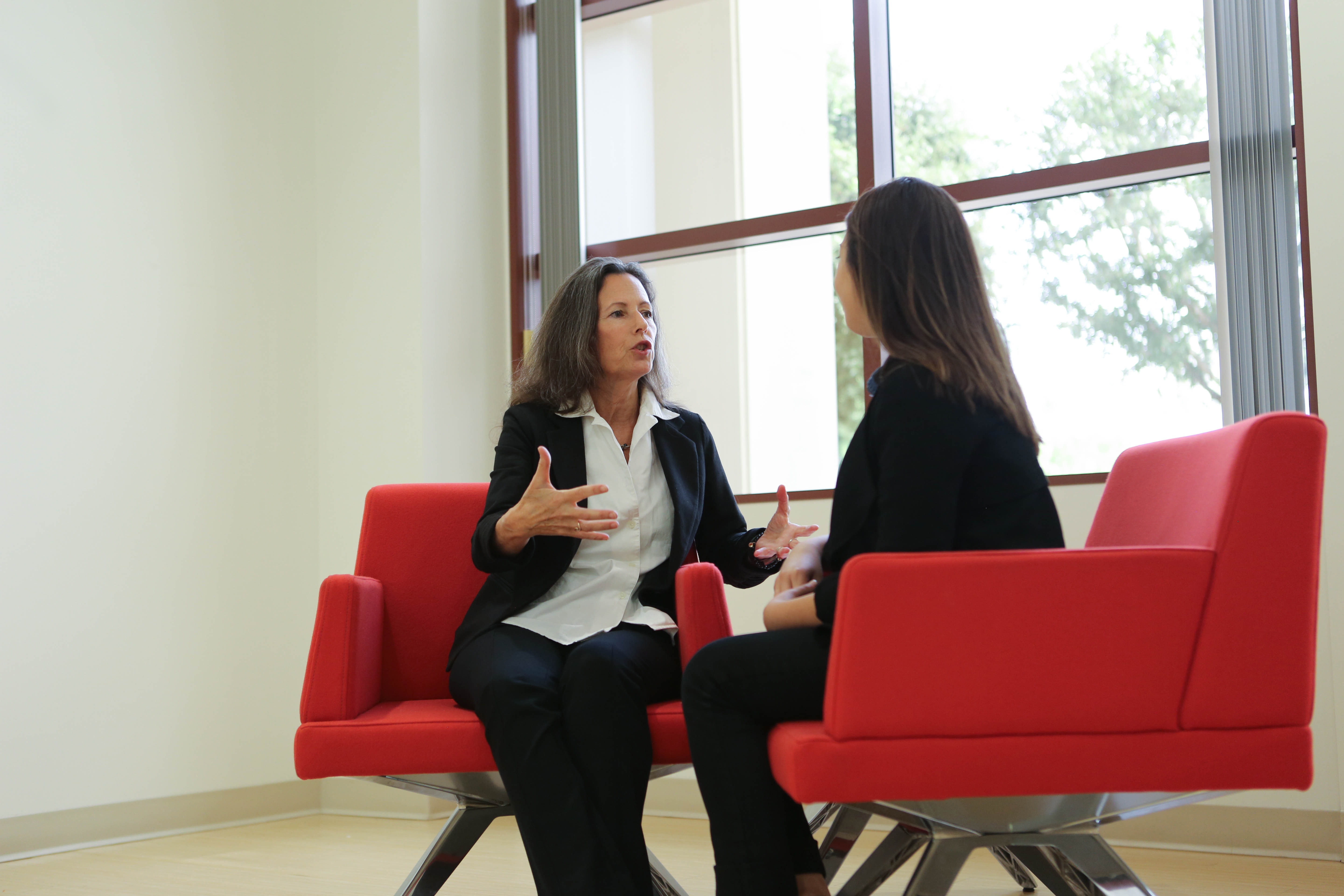Q&A: Environments that Improve STEM Learning
Mon, Feb 26, 2018 LPA Staff Informed Design, STEM Education, LPAred, Dr. Julie Zoellin Cramer, Research-based Design, Catalyst
Education researcher and strategist Dr. Julie Zoellin Cramer links designers and educators to create environments that improve student learning. The founder of Wayfind Education, Julie recently joined LPA to help find new ways for physical spaces to advance the goals of educators. In an interview with Catalyst, she discusses the challenges, nuances and long-term benefits of implementing a STEM learning environment.
 How do you describe your role as a learning strategist?
How do you describe your role as a learning strategist?
If we’re designing for students, we really need to get back to what that means – to the heart of the matter. I describe it as taking a deeper dive beyond the motto of “instruction drives construction.” Not every 21st century space is going to fit every group of students. You want to consider their cultural context, where they are in terms of human development and where we are as a society. I’m not bringing information to them that they don’t know. The students know their story. We just need to talk to them and listen. And educators know this. With that said, they may be unaware that we should be thinking about this deeper context even when designing spaces.
What are some of the challenges for educators who are thinking about bringing a STEM space to their school?
One of the challenges with STEM education is the need for trained people in the workforce. We don’t have a high number of students graduating with STEM degrees in the United States. We’re not just looking for students to understand the STEM disciplines, but the approach to learning that helps them become a very flexible workforce employee. An environment where they can understand critical thinking, collaboration, communication and problem-solving skills.
We start by trying to get educators back into the mindset of a student. We ask them about a spark moment of learning when they were engaged. The most inspiring learning spaces connect students to what’s going on in the real world. They involve partnerships and mentorships within the community. They have experiences where they can take their learning and go outside and tackle real-world problems.
What do educators need to know to implement a more STEM-focused approach?
It is no longer assumed that STEM education is only for the few who have an interest in science or mathematics. In fact, STEM education is something we can activate in any student. Every person has a deep interest in mastering their environment, and they need to learn what the opportunities are, what the fun is about it, what the curiosity is about it. Providing environments that are fun, curious and engaging and provide choice allows students to say, “Yes, I am a STEM learner.”
Whether you’re designing a STEM environment in an existing classroom or designing a new classroom, there’s a few design principles to consider. One is ensuring that the space has flexibility, that the space has connectivity to other classrooms or digitally connected to the world around the students. You also want to make sure it’s a space that’s collaborative. And you want to make sure it’s a space that has visible learning present. You want the students to be able to showcase their work, to present their work, to be proud of the work that they’re doing.
 What does a student need to succeed in STEM?
What does a student need to succeed in STEM?
STEM learning is not something you do just inside the classroom. To generate enthusiasm for the field, we need students to take up a STEM identity. That requires learning and loving STEM within and outside the classroom. The students who succeed are those who feel they belong to an academic environment and identify as a STEM learner.
I encourage people to think of STEM education in terms of a robust ecosystem. Considering it’s not just about the learning that takes place inside the classroom, it’s about learning that takes place after school and at home. That’s what develops the STEM identity that will carry a student through school and into the workforce. It gives them the skills, even if they don’t necessarily want to go into a traditional STEM field.
How do these principles apply to spaces beyond K-12 environments?
We are all lifelong learners, and we are constantly forming new identities. Whether at school or in the workforce, we want to support other people’s strengths, interests and values. Community colleges have the ability to be flexible and adaptive to the community in which they serve. As the industries in their community change, they can more quickly adapt their curriculum and the needs. That’s a place where we can see a contribution to the STEM workforces, through community college learning. And we want to have a successful employee, a successful learner in the work context. So it absolutely applies in the same way. Give people choices to go and find what best works for them in terms of their strengths, interests and values. When you do that, they will go forth. They will go boldly.
This story originally appeared in the first edition of Catalyst, a quarterly publication that takes a deep dive into the new ideas, industry leaders and cutting-edge initiatives changing lives by design.
